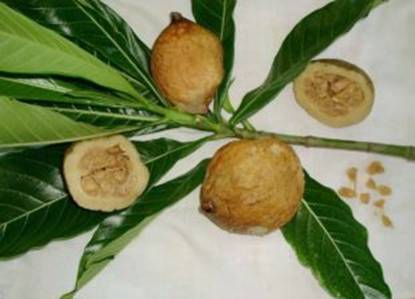GENIPA AMERICANA
POPULAR NAMES: Jenipá, Jenipapo, Huito
RUBIACEAE

INDIGENOUS NAME: Genipapo comes from the Tupi-Guarani and means "fruit that stain or make dye" because the Indians used the fruit to paint the body.
Origin: Savannas and several forest formations throughout Brazil.
Characteristics:
A large tree of
Planted in the site of Frutas Raras: August 1998, bloomed for the first time in 2005 and not bear fruit.
Tips for cultivation: A fast-growing shrub, assessing red clay soils with rapid drainage of rain water and around of pH 5.5, is resistant to light frosts to -2°C (29°F), enjoys full sun and supports periodic flooding.
Propagation:
Seeds are kept in the refrigerator for up to 1 year, germinate in
Planting:
I recommend to plant in
full sun in a space of 6 x 6 m (20 x 20 feet).
Best planting time is October to December, to water
Cultivating: The
plant grows fast and needs no special care, only the holes should be deep,
to act a good development of root system.
Make pruning to form. Fertilize containing organic compound, can be (
Uses: The fruits are consumed in natura, although it tastes very strong and used for the manufacture of liquor and nutritious juices.
Flowering in the site of Frutas Raras: November to December.
Fruiting in the site of Frutas Raras: October to December.
Back to the seedlist (English) or back to Rubiaceae (Portuguese)